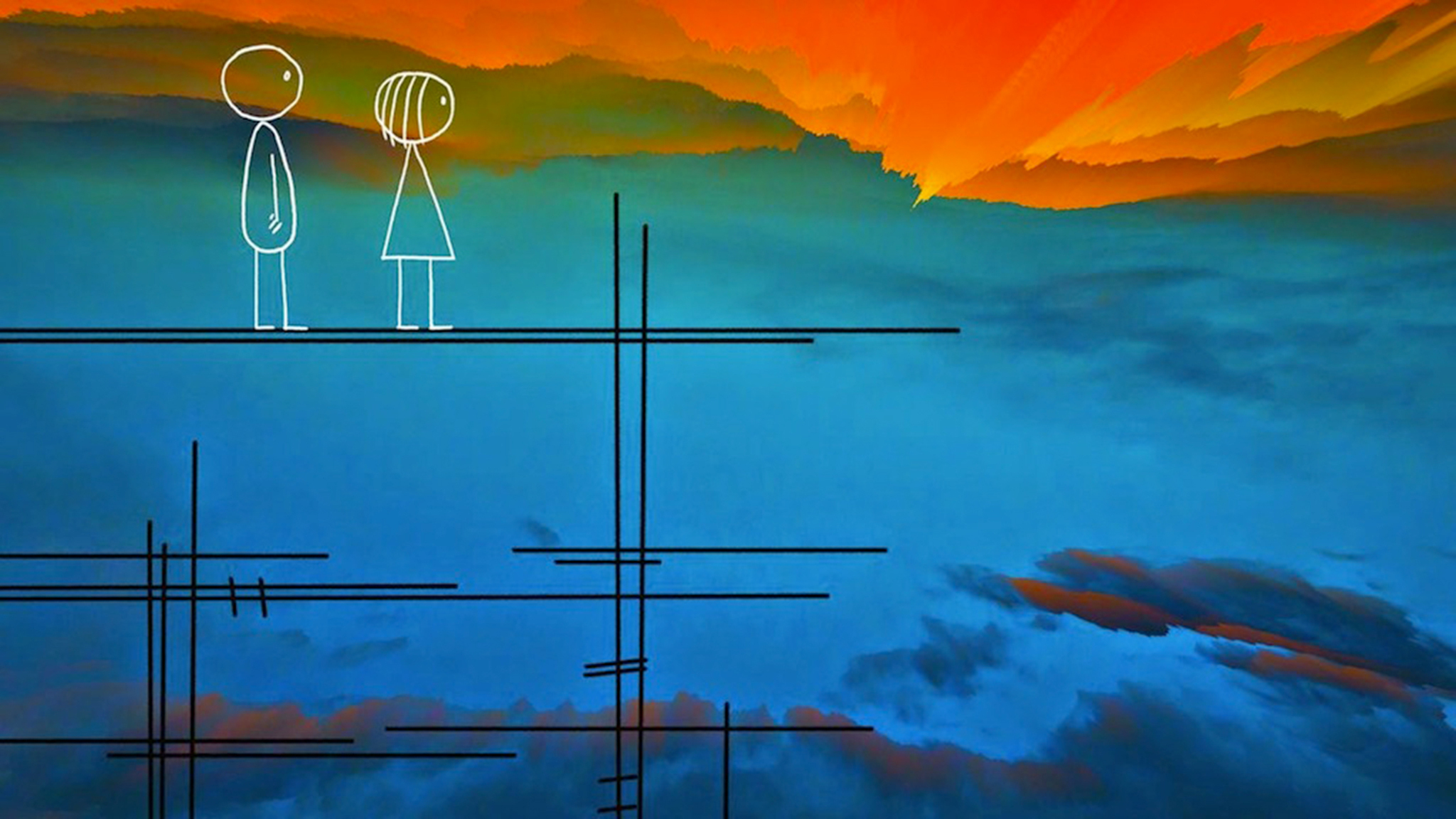Don Hertzfeldt is a magician. Beginning with basic elements – rudimentary stick figures and bemused, detached commentary on modern life – he constructs elaborate universes. Their small details become invested with meaning and heartbreak, and the intentionally simple becomes endlessly complex. He did this in It’s Such A Beautiful Day, one of my favorite films of 2012, and he did it again in World of Tomorrow, one of my favorite films of 2015.
The key difference between the two? Roughly 45 minutes. Both share Hertzfeldt’s existential playfulness, uncanny ability to generate deep empathy from absurdist humor, and deep sadness, but the compression of time (and, so, themes) in World of Tomorrow actually works to its benefit. Judged solely on ideas, it’s the headiest 15 minutes you’re likely to spend watching a film today. It might also be the most beautiful.
 For a 15-minute short film, World of Tomorrow is also remarkably hard to summarize. This might also result from the fact that I don’t want to give away the good jokes (and there are a lot of good jokes), but let’s give it a try.
For a 15-minute short film, World of Tomorrow is also remarkably hard to summarize. This might also result from the fact that I don’t want to give away the good jokes (and there are a lot of good jokes), but let’s give it a try.
In essence, WoT is the story of Emily Prime, a toddler visited by her own clone from the future, a “third-generation” Emily who has come to take her on a tour of the world she will live in and explain how things will work when she grows up. In a structural sense, it’s a familiar story of the future fantastic, not that far removed from It’s A Wonderful Life or A Christmas Carol.
Unlike Capra or Dickens, though, Hertzfeldt doesn’t start with a protagonist on the brink of disaster or marked by his own cruel choices – he starts with an adorable young girl who serves as an audience surrogate, as oblivious to where we’re headed as we are. Emily Prime’s blinking lack of comprehension, typical 3-year-old’s read on the messages being conveyed, and occasional insight, overwhelming in its innocence, is one of the film’s recurring themes.
It’s a discourse between innocence and experience – the in-joke is that we viewers are also innocent about the world of tomorrow the film sets out to describe. As it turns out, the world of tomorrow is pretty bleak.
For one thing, the earth is uninhabitable. The elite and the prosperous have taken off for different realms first-class, mapping their consciousnesses into small black boxes shot into space, while the poor and desperate book their transit with budget space-travel companies, trips that routinely don’t end well. The process of cloning has led to eternal life of a sort, though our future selves are subject to predictable deterioration and acute existential angst. Category confusion emerges: you might fall in love with a rock, for instance. Desire outlasts the ability to make sense of what one desires. But, third-generation Emily assures Emily Prime, on the whole things have worked out, so don’t worry. Emily Prime’s response: “I had lunch today.”
In It’s A Beautiful Day, these sorts of offhand jokes started to run a bit long by the end. That’s a profoundly emotional film  and has much to recommend it, but it’s also one that seems calculated and almost callous by comparison to WoT. The deep investment in this world, and especially in these characters, and even more especially in Emily Prime, add a certain gentleness that is, by the end of WoT‘s 15 minutes, utterly devastating.
and has much to recommend it, but it’s also one that seems calculated and almost callous by comparison to WoT. The deep investment in this world, and especially in these characters, and even more especially in Emily Prime, add a certain gentleness that is, by the end of WoT‘s 15 minutes, utterly devastating.
As Noel Murray wrote (in what I consider the definitive review and which you should go read right now), this is a film focused on how “humanity is obsessed with preservation and nostalgia” – its central conceit is a visit from the future, in part to acquire an old memory, something real and tangible to hold onto. As third-generation Emily tells us, most memories in the future are of people watching people watching people watch screens. Emily Prime’s innocence and active, direct engagement with her world have a vitality her future version admires and longs for, centuries ahead. “Now,” she is told by her sort-of-self, “is the envy of all the dead.”
 So a film portraying a dystopian techno-future ends up being an affirmation of life as its lived. The skewed view, seen through a child’s eyes and the spellbinding geometric shapes that make up most of the world(s), reveals so much more about today than the future. That’s always been the goal of speculative fiction, but it’s a rare thing to pull off, with a mastery of visual storytelling and with what seems so little effort.
So a film portraying a dystopian techno-future ends up being an affirmation of life as its lived. The skewed view, seen through a child’s eyes and the spellbinding geometric shapes that make up most of the world(s), reveals so much more about today than the future. That’s always been the goal of speculative fiction, but it’s a rare thing to pull off, with a mastery of visual storytelling and with what seems so little effort.
World of Tomorrow is a kind of small magic, and it’s the best short film I’ve ever seen.

